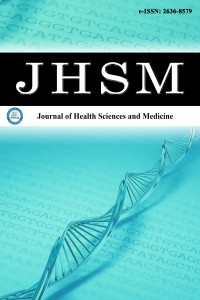1.
Dai D, Feinstein JA, Morrison W, Zuppa AF, Feudtner C. Epidemiology of Polypharmacy and potential drug-drug interactions among pediatric patients in intensive care units of US Children's Hospitals. Pediatr Crit Care Med. 2016;17(5):e218-e228. doi: 10.1097/pcc.0000000000000684
2.
Salerno SN, Burckart GJ, Huang SM, Gonzalez D. Pediatric drug-drug interaction studies: barriers and opportunities. Clin Pharmacol Ther. 2019;105(5):1067-1070. doi: 10.1002/cpt.1234
3.
Joseph PD, Craig JC, Caldwell PH. Clinical trials in children. Br J Clin Pharmacol. 2015;79(3):357-369. doi: 10.1111/bcp.12305
4.
Shini Rubina SK, Anuba PA, Swetha B, Aishwarya PM, Sabarathinam S. Drug interaction risk between cardioprotective drugs and drugs used in treatment of COVID-19: a evidence-based review from six databases. Diabetes Metab Syndr. 2022;16(3):102451. doi: 10.1016/j.dsx.2022.102451
5.
Nobili A, Licata G, Salerno F, et al. Polypharmacy, length of hospital stay, and in-hospital mortality among elderly patients in internal medicine wards. The REPOSI study. Eur J Clin Pharmacol. 2011;67(5):507-519. doi: 10.1007/s00228-010-0977-0
6.
Burns KH, Casey PH, Lyle RE, Bird TM, Fussell JJ, Robbins JM. Increasing prevalence of medically complex children in US hospitals. Pediatrics. 2010;126(4):638-646. doi: 10.1542/peds.2009-1658
7.
Yıldırım AB, Kılınç AY. Polypharmacy and drug interactions in elderly patients. Türk Kardiyoloji Dernegi Arsivi. 2017;45(Suppl 5):17-21. doi: 10.5543/tkda.2017.92770
8.
Cankara F, Aşcı H, Sönmez Y. Üniversite hastanesinde yatan hastaların profili, hekimlerin ilaç tercihleri ve polifarmasi varlığı. Süleyman Demirel Üni Sağ Bil Derg. 2015;6(1):20-25.
9.
Spencer D, Marshall J, Post B, et al. Psychotropic medication use and polypharmacy in children with autism spectrum disorders. Pediatrics. 2013;132(5):833-840. doi: 10.1542/peds.2012-3774
10.
Bakaki PM, Horace A, Dawson N, et al. Defining pediatric polypharmacy: a scoping review. PLoS One. 2018;13(11):e0208047. doi: 10.1371/journal.pone.0208047
11.
Holden TR, Kushner BS, Hamilton JL, Han B, Holden SE. Polypharmacy is predictive of postoperative complications in older adults undergoing ventral hernia repair. Surg Endosc. 2022;36(11):8387-8396. doi: 10.1007/s00464-022-09099-9
12.
Ebrahimoghli R, Janati A, Gharaee H, Aghaei MH. Polypharmacy pattern in Iran: a comprehensive analysis of a large prescription database. Iran J Pharm Res. 2022;21(1):e131304. doi: 10.5812/ijpr-131304
13.
Feudtner C, Dai D, Hexem KR, Luan X, Metjian TA. Prevalence of polypharmacy exposure among hospitalized children in the United States. Arch Pediatr Adolesc Med. 2012;166(1):9-16. doi: 10.1001/archpediatrics.2011.161
14.
Jeon SM, Park S, Rhie SJ, Kwon JW. Prescribing patterns of polypharmacy in Korean pediatric patients. PLoS One. 2019;14(10):e0222781. doi: 10.1371/journal.pone.0222781
15.
Yeşil Y, Cankurtaran M, Kuyumcu ME. Polifarmasi. Klin Gelişim. 2012;25(3):18-23. doi: 10.38079/igusabder.649423
16.
Antoon JW, Hall M, Herndon A, et al. Prevalence of clinically significant drug-drug interactions across US children's hospitals. Pediatrics. 2020;146(5):e20200858. doi:10.1542/peds.2020-0858
17.
Zheng WY, Richardson LC, Li L, Day RO, Westbrook JI, Baysari MT. Drug-drug interactions and their harmful effects in hospitalised patients: a systematic review and meta-analysis. Eur J Clin Pharmacol. 2018;74(1):15-27. doi: 10.1007/s00228-017-2357-5
18.
Sienkiewicz-Oleszkiewicz B, Salamonowicz-Bodzioch M, Slonka J, Kalwak K. Antifungal drug-drug interactions with commonly used pharmaceutics in European pediatric patients with acute lymphoblastic leukemia. J Clin Med. 2023;12(14):4637. doi: 10.3390/jcm12144637.
19.
Feinstein J, Dai D, Zhong W, Freedman J, Feudtner C. Potential drug-drug interactions in infant, child, and adolescent patients in children's hospitals. Pediatrics. 2015;135(1):e99-e108. doi: 10.1542/peds.2014-2015.
20.
Daignault C, Sauer HE, Lindsay H, Alonzo A, Foster J. Investigating potential drug-drug interactions in pediatric and adolescent patients receiving chemotherapy. J Oncol Pharm Pract. 2022;28(4):904-909. doi: 10.1177/10781552221079786.
21.
Devrim İ, Gülfidan G, Tavlı V, et al. Dr. Behçet Uz Çocuk Hastanesinde antibiyotik kullanımına ilişkin nokta prevelans çalışması. J Pediatr Infect/Cocuk Enfeks Derg. 2009;3(1):11-13.
22.
Ergül AB, Gokcek İ, Çelik T, Torun YA. Çocuk hastalarda uygunsuz antibiyotik kullanımının değerlendirilmesi: nokta prevalans çalışması. Türk Pediatri Arş. 2018;53(1):17-23. doi: 10.5152/TurkPediatriArs.2018.5644
23.
Raaska K, Niemi M, Neuvonen M, Neuvonen PJ, Kivistö KT. Plasma concentrations of inhaled budesonide and its effects on plasma cortisol are increased by the cytochrome P4503A4 inhibitor itraconazole. Clin Pharmacol Ther. 2002;72(4):362-369. doi: 10.1067/mcp.2002.127397
24.
De Wachter E, Malfroot A, De Schutter I, Vanbesien J, De Schepper J. Inhaled budesonide induced Cushing's syndrome in cystic fibrosis patients, due to drug inhibition of cytochrome P450. J Cyst Fibros. 2003;2(2):72-75. doi: 10.1016/s1569-1993(03)00022-5
25.
Bolland MJ, Bagg W, Thomas MG, Lucas JA, Ticehurst R, Black PN. Cushing's syndrome due to interaction between inhaled corticosteroids and itraconazole. Ann Pharmacother. 2004;38(1):46-49. doi: 10.1345/aph.1D222
26.
Clarithromycin. Tuberculosis (Edinb). 2008;88(2):92-95. doi: 10.1016/s1472-9792(08)70005-2
27.
Ohno I. Drug induced nephrotic syndrome. Nihon Rinsho Japanese J Clin Med. 2004;62(10):1919-1924.
28.
Singh Rehan H, Hotha P. Antimicrobial agents-induced hypokalemia: a possible causality association. Indian J Crit Care Med. 2019;23(4):175-177. doi: 10.5005/jp-journals-10071-23148
29.
Rhone ET, Carmody JB, Swanson JR, Charlton JR. Nephrotoxic medication exposure in very low birth weight infants. J Matern Fetal Neonatal Med. 2014;27(14):1485-1490. doi: 10.3109/ 14767058.2013.860522
30.
Stefanovic S, Jankovic SM, Novakovic M, Milosavljevic M, Folic M. Pharmacodynamics and common drug-drug interactions of the third-generation antiepileptic drugs. Expert Opin Drug Metab Toxicol. 2018;14(2):153-159. doi: 10.1080/17425255.2018.1421172
31.
Gonzalez D, Sinha J. Pediatric drug-drug interaction evaluation: drug, patient population, and methodological considerations. J Clin Pharmacol. 2021;61(S1):S175-S187. doi: 10.1002/jcph.1881
32.
Perry C, Davis G, Conner TM, Zhang T. Utilization of Physiologically based pharmacokinetic modeling in clinical pharmacology and therapeutics: an overview. Curr Pharmacol Rep. 2020;6(3):71-84. doi: 10.1007/s40495-020-00212-x.
33.
Chhatrala CM, Madhan R, Chalasani SH, Syed J, Pal N. Assessment of drug-related problems associated with narrow therapeutic index drugs: a prospective cohort study. J Patient Safety Risk Managem. 2023:28(6):268-274. doi: 10.1177/2516043523119019
34.
Villa Zapata L, Subbian V, Boyce RD, et al. Overriding drug-drug interaction alerts in clinical decision support systems: a scoping review. Stud Health Technol Inform. 2022;290:380-384. doi: 10.3233/shti220101
35.
Hauben M. Artificial intelligence and data mining for the pharmacovigilance of drug-drug interactions. Clin Ther. 2023; 45(2):117-133. doi: 10.1016/j.clinthera.2023.01.002.

